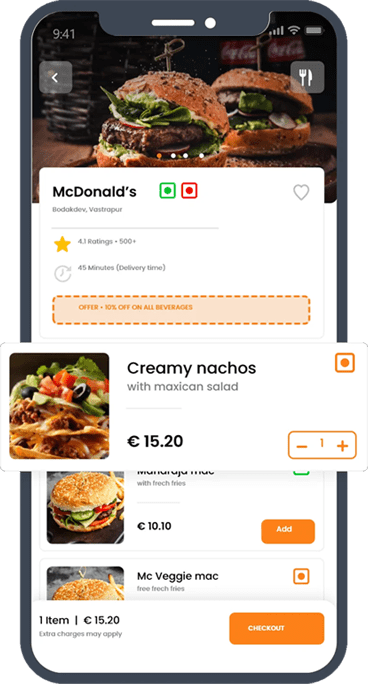Food Ordering App Development: A Recipe for Success in 2024
The food delivery industry is a culinary behemoth, experiencing a meteoric rise in recent years. Customers crave convenience, and food ordering apps deliver it straight to their doorsteps. If you’re considering venturing into this appetizing space, this comprehensive guide on food ordering app development is your secret ingredient.
Why Develop a Food Ordering App in 2024?
The food delivery market is brimming with opportunity. Here’s a taste of why it’s a prime time to invest:
- Exponential Growth: The global online food delivery market is projected to reach a staggering USD 327.3 billion by 2027, according to [Source: Expert Market Research].
- Shifting Consumer Preferences: Busy lifestyles and a growing tech-savvy population fuel the demand for on-demand food delivery.
- Adaptability and Innovation: The industry thrives on innovation. New features, loyalty programs, and niche delivery options keep users engaged.
Unveiling the Food Ordering App Development Landscape
Before diving into development, understanding the different models is crucial. Here are the two main categories:
- Restaurant-to-Consumer (Direct Ordering): This model allows restaurants to create their own branded app for direct customer interaction and order placement. Popular examples include Domino’s or Starbucks apps.
- Platform-to-Consumer (Delivery Aggregators): These platforms act as intermediaries, connecting users with a vast network of restaurants and delivery partners. Think Uber Eats, DoorDash, or Grubhub.
Additional Considerations:
- Niche Focus: Consider specializing in a specific cuisine, dietary preference (vegan, gluten-free), or delivery speed (under 30 minutes) to carve out a unique market position.
- Delivery Model: Will you manage your own delivery fleet, partner with existing services, or offer a hybrid approach?
Essential Features for a Winning Food Ordering App
A successful food ordering app caters to both users and restaurants. Here are some must-have features:
- User-Friendly Interface: Prioritize a clean, intuitive design with seamless navigation and search functionality. High-quality food images are a must!
- Advanced Search and Filter Options: Allow users to search by cuisine, dietary needs, price range, delivery time, and even restaurant ratings.
- Multiple Payment Options: Integrate secure and convenient payment methods like credit cards, debit cards, and digital wallets.
- Real-Time Order Tracking: Keep users informed about order status with a live GPS tracking feature for deliveries.
- Order History and Reviews: Enable users to easily access past orders, reorder favorites, and leave reviews for restaurants.
- Restaurant Management Dashboard: Provide restaurants with a dedicated portal to manage menus, receive orders, track deliveries (if applicable), and access customer data.
- Push Notifications: Keep users engaged with promotional offers, order updates, and personalized recommendations.
Building Your Food Ordering App: Key Considerations
- Development Approach: Choose between native app development (iOS and Android), a cross-platform solution, or a low-code/no-code app builder based on your budget and technical expertise.
- Tech Stack: Select a robust tech stack that ensures scalability, security, and efficient data management. Popular choices include languages like Kotlin and Swift, frameworks like React Native or Flutter, and cloud platforms like AWS or Google Cloud.
- Cost Estimation: Food ordering app development costs can vary depending on features, complexity, and chosen development approach. Expect a ballpark range of $15,000 to $60,000+ for a basic app.
Pro Tip: Partner with an experienced app development company that specializes in the food delivery domain. Their expertise can save you time, money, and ensure a high-quality app launch.
Beyond Development: Launching and Marketing Your Food Ordering App
A successful app launch requires a well-defined marketing strategy. Here are some key steps:
- App Store Optimization (ASO): Optimize your app listing with relevant keywords, captivating visuals, and compelling descriptions to enhance discoverability in app stores.
- Social Media Marketing: Leverage social media platforms to generate pre-launch buzz, showcase app features, and run targeted campaigns to reach your ideal customer base.
- Loyalty Programs and Referral Incentives: Encourage user engagement and repeat business with attractive loyalty programs and referral rewards.
- Strategic Partnerships: Collaborate with local restaurants, delivery services, or influencers to expand your reach and attrative.


